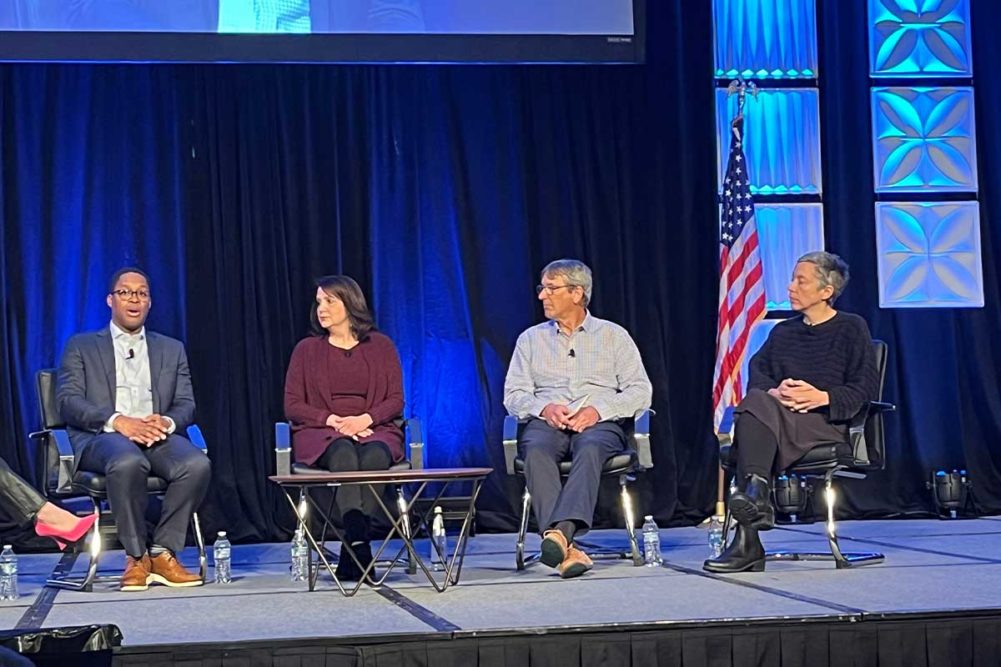CHICAGO — Meeting the needs of employees and creating an inclusive workplace involves being curious about workers’ lives and caring about their problems.
“Over 30% of the people in the United States do not have $400 in a savings account,” explained Ted Castle, owner and president of Rhino Foods, Burlington, Vt., in a diversity, equity and inclusion panel discussion at BakingTech, held Feb. 28 to March 2 in Chicago. “So you think about the people who work for you when their car breaks down, and it costs them $500, $600 or $700. What are they going to do when they don’t have that? They’re going to show up late for work, they’re going to be late taking kids to school. They’re going to lose their job and go onto the next place.”
Rhino responded to that need by partnering with a credit union and starting a program that allows workers to borrow up to $1,500 the day they ask for it. The loan comes from the credit union and not the company, and it’s paid back through payroll deductions. The program fits not only the needs of the workers but the business as well.
“And now you’ve kept a person and that person has kept their job,” Mr. Castle said. “Is that belonging? You bet it is. Is that trust? Does that make good business sense? You bet it does. Our retention rate went up 30% in three years because of that.”
Panelists discussed the ways their companies and organizations help create diverse and inclusive places to work. Greyston Bakery, Yonkers, NY, has an open hiring process, which eliminates barriers to hiring, such as someone who has served time in jail.
“There’s a lot of misconceptions about open hiring and what it is,” said Joseph Kenner, president and chief executive officer at Greyston. “All we do is get rid of the barrier to entry, but the standards and good manufacturing practices — coming to work on time, taking instruction — the expectation is to perform. … If that does not happen, there is accountability, and we will part ways if things don’t work out.”
He said the bakery expects workers to thrive through inclusive employment practices.
The road to a diverse workforce is not always a smooth one. When Mr. Castle’s company implemented an open hiring policy, it was a struggle as managers had concerns about the practice. But once the company listened and communicated with managers, they bought into the plan and became advocates for it. The practice also creates good workers.
“This is letting people in the door who have been locked out of the door,” Mr. Castle said. “If you do it right, you’re going to have people who will give you commitment that’s unbelievable because you’ve given them a chance.”
Companies, especially large ones with several locations, need to set a framework and strategy for diversity and inclusion, then allow each location to find the best ways to implement it in their communities, said Connie Dever, director of diversity, equity and inclusion for Flowers Foods, Thomasville, Ga. For instance, a community with a large Indian population could celebrate Diwali.
“Inclusion is just about inviting people in, making them feel comfortable and really creating that sense of belonging,” she said.
Inclusion also means understanding not only the community but the individual as well.
“I’m an extreme extrovert. I love being out talking to people,” Ms. Dever said. “I love being on team calls. So that’s my inclusion. For somebody who’s more of an introvert, that would not work for them. Treat people how they want to be treated, not how you want to be treated.”
Karen Bornarth, executive director, the Bread Bakers Guild of America, said workers on every level deserve fair treatment in their jobs. Even small bakeries need to invest in their people for the health and stability of their business.
“Inclusion means nothing if we’re not offering the bottom of the hierarchy the basic needs,” she said. “It’s great that people feel they belong, but it’s even better that they make a living wage, that they have a set schedule, they have benefits, they have stability and they have opportunities for advancement.”






